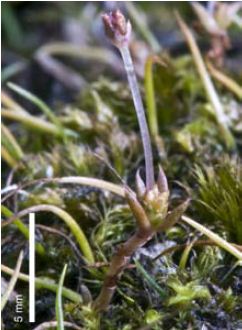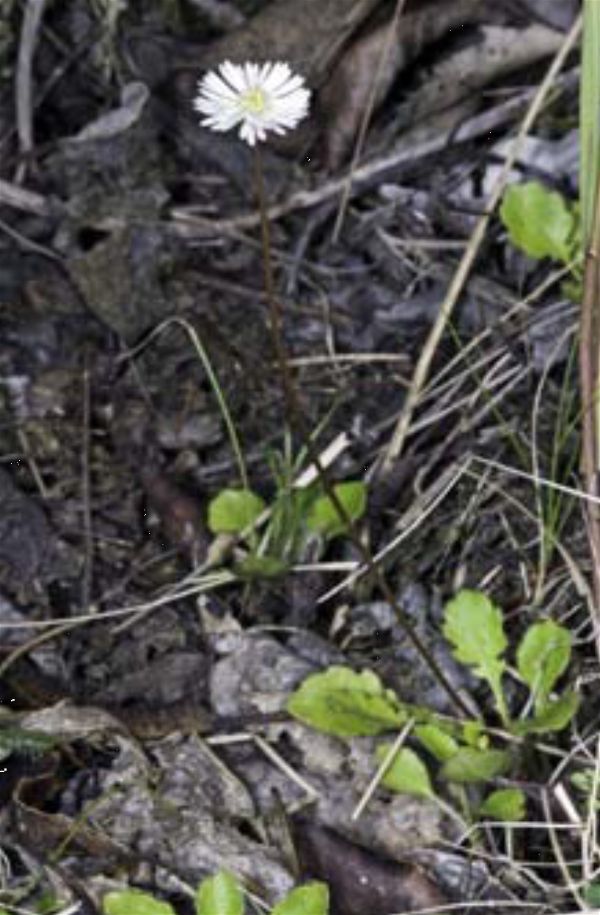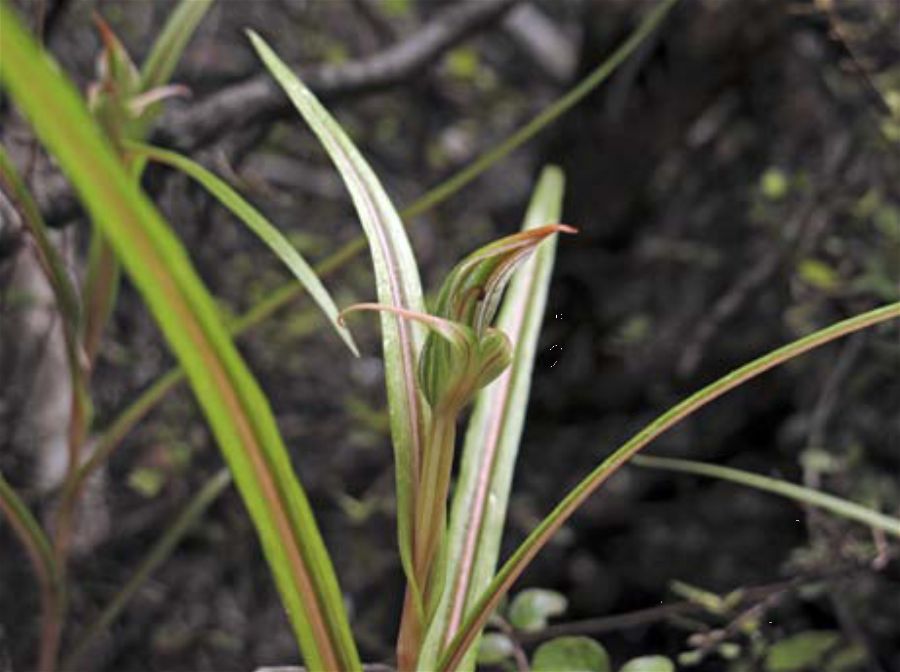Trip Report – 3-4 December 2011: Mangatoetoe Valley; Sutherland’s Track, Te Kopi, Wairarapa – map BR33
 |
| The ‘Nationally Critical’ Crassula peduncularis. Photo: Jeremy Rolfe. |
Day 1, 3 December: Mangatoetoe Stream’s valley
Mangatoetoe Stream’s valley has a wide variety of habitats for different forms of plant life. The area has been grazed, but we saw only a few sheep in the lower valley. 4WD and quad-bike access up the valley means that numerous weed species occur. We were instructed to keep an eye out for hieracium (
Pilosella officinarum) which had been seen here. Diligent work by GWRC and DOC seems to have been eradicated it, at least in the area we visited.
We made a late start in warm, fine weather, with little wind to relieve the heat. The first species of interest was in the car park where the seldom-seen (at least by the present company)
Pelargonium inodorum was flowering. It was also seen further up the valley. It was not possible to visit all the habitats, so cliff faces and rock outcrops were the main area of botanising on the way up the valley.
Brachyglottis greyii, and the native fuzzweed (
Vittadinia australis) were in flower. The area was drier than during a previous visit at a similar time, so most orchids were in seed, apart from
Thelymitra longifolia agg.
The emblematic plant of the Wellington Botanical Society, Jersey fern (
Anogramma leptophylla) was almost past its best, except for a small patch growing behind a screen of shrubbery, so less exposed to sun and wind. Other species of interest that people were keen to see were
Coprosma virescens, the native carrot (
Daucus glochidiatus), which is locally very common, and the small maidenhair fern (
Adiantum aethiopicum).
Botanising on the return back down the valley was less of a priority but despite this, we found a plant with a rating of ‘Nationally Critical’,
Crassula peduncularis, growing in an “ephemeral wetland”, really just a large puddle that dries out in the summer, on an offshoot of the 4WD track. This brings to four the number of native crassula species (5 in total if you count the exotic
C. decumbens) found in this valley. This serves to illustrate the somewhat serendipitous nature of the discovery of a plant like this. Too soon and you have a muddy puddle to walk around or drive through, and probably in another week there would be just dried out material of little interest.
Of some concern is the amount of nodding thistle (
Carduus nutans), seen, mainly along the 4WD track. Of note was the number of clover species found in the area. To date there are eleven species, including the uncommon and unusual species, narrow-leaved clover (
Trifolium angustifolium).
This is very interesting area of which we saw only a small portion. Another trip at another time of the year would be in order.
Pat Enright
 |
| Lagenifera pumila. Photo: Jeremy Rolfe. |
Day 2, 4 December: Sutherland’s Track – Washpool Track
A steep, steady climb on Sutherland’s Track, a 4WD road above the Te Kopi house, took us past a disappointingly wide range of adventives including willow sp., an inappropriate setting for a DOC facility. Because we had limited time on this, our final day, we wanted as much time as possible for indigenous botany, so we chose not to list adventives. Not far past the junction of Sutherland’s Track, and the Washpool Track we then walked along, where an extensive recently-felled stand of eucalypts were regenerating, we were relieved to see on our left, hard and black beech forest and with it, a sudden increase in indigenous species. We were greatly helped by each having a copy of the extensive species list begun by A.P. Druce dating from 1970, and added to by Pat Enright, Rob Lucas and Olaf John from 1997 onwards:
Indigenous Vascular Plants in the Vicinity of the Putangirua Stream. Regrettably, we covered only part of the area covered by the list. Our planned itinerary could not include returning via a descent to Putangirua Stream, because the track was closed. Under beech, we were surprised and delighted to see three plants of the greenhood orchid
Pterostylis irsoniana, a species which none of us had seen before except in books. In perfect condition, the largest one was much photographed. Also trackside were extensive patches of
Lagenifera pumila in flower and
Drosera auriculata. Despite the dry habitat there was a variety of ferns, including
Hymenophyllum cupressiforme and
Grammitis pseudociliata. We discussed whether a single plant of gahnia was
Gahnia setifolia or
G. xanthocarpa. I opted for the latter because of the black nuts, although the site did not seem to be as moist as one would normally expect for that species. Out in the open again we added
Solanum aviculare,
Rubus schmidelioides,
Oxalis rubens, and on the road back we saw one plant of the grass,
Elymus solandri.
Participants : Gavin Dench, Pat Enright (leader / day 1), Frances Forsyth, Chris Hopkins, Chris Horne (leader day 2), Brenda Johnston, Sheelagh Leary, Pat McLean, Barbara Mitcalfe (scribe / day 2); Emil Schmieg, Sunita Singh (trip organiser).
 |
| Pterostylis irsoniana. Photo: Sunita Singh. |

 Site Index
Site Index







 Site Index
Site Index





